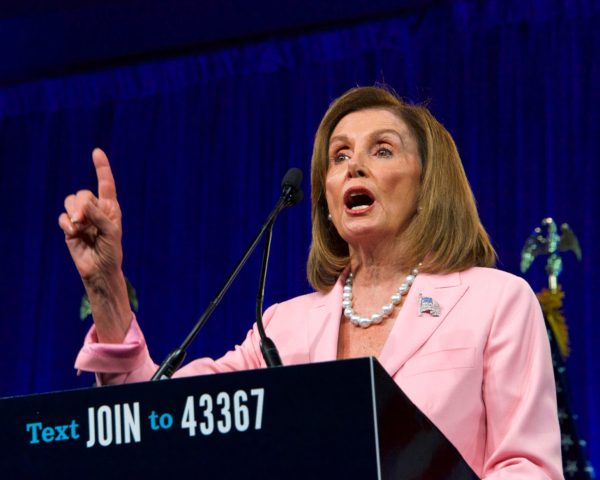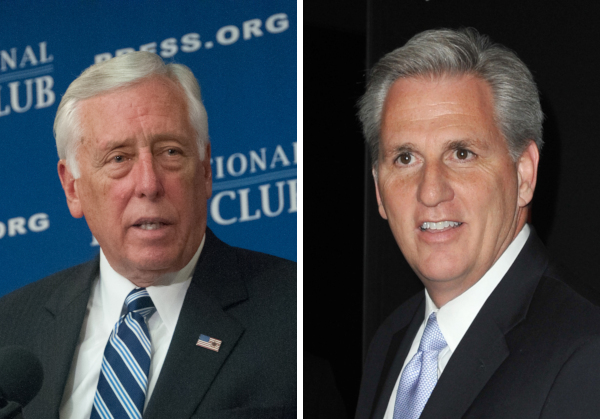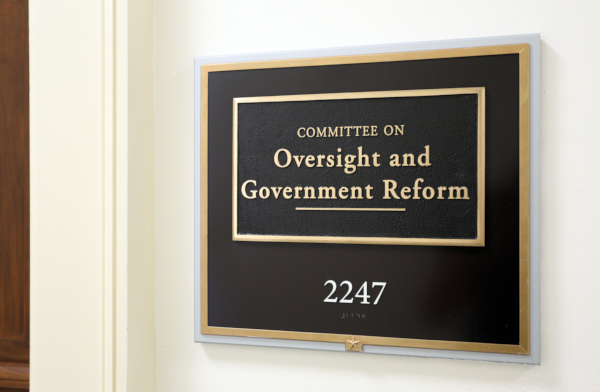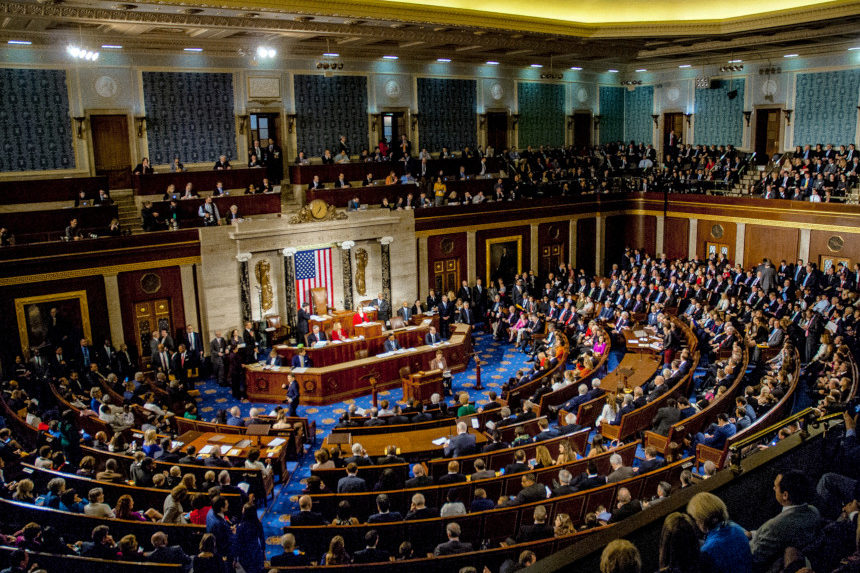To say that there’s a lot going on in Washington, D.C. these days would be a massive understatement. Much of the action is centered around the two houses of Congress, and particularly around the United States House of Representatives. Created in Article One of the Constitution, the House consists of directly elected representatives from each state, the number of which is determined by each state’s population. Recent events involving House leadership have prompted a number of titles to be used regularly in the news, including Whip, Conference Chair, and more. But what exactly are these jobs, and how are the various reps selected for those positions? We’ve got your roster.
The Speaker of the House
Current Speaker: Nancy Pelosi (D), California 12th Congressional District

The Speaker is referred to as the presiding officer of the House because they do just that: preside over the House’s business. The Speaker is elected by House membership, and usually comes from the majority party. It’s an incredibly important role for a variety of reasons. Per the rules laid out in the Presidential Succession Act of 1947, the Speaker of House is second in line of succession after the Vice President. Among other duties, the Speaker also selects the chairs for the standing committees of the House and recognizes who speaks on the floor and in what order.
The Speaker also enforces floor rules, which became a bone of contention recently as House Minority Leader Kevin McCarthy and others have complained about the mask mandate in the House. Pelosi continues to enforce the mandate, issuing fines for unmasked members. Though McCarthy is trying to cite recent CDC rulings, the House’s attending physician, Dr. Brian Monahan, reitereated that the mask rules will stay in place on the floor until all the members are vaccinated; at this point, the only unvaccinated members of Congress remaining are in McCarthy’s party.
Floor Leader, aka Majority or Minority Leader
Current Majority Leader: Steny Hoyer (D), Maryland 5th
Current Minority Leader: Kevin McCarthy (R), California 23rd

As the name implies, the floor leader stands up for their party on the floor of the House. They drive the party’s legislative agenda. In February, Hoyer took to the floor to speak out over some of the outrageous statements made by Representative Marjorie Taylor Greene, including Facebook posts that seemed to implie threats against fellow representatives. House members subsequently voted to remove her from her committee assignments.
Whips
Current Majority Whip: James Clyburn (D), South Carolina 6th
Current Minority Whip: Steve Scalise (R), Louisiana 1st
Elected by their respective parties, Whips work to ensure that the individual members of the party vote in a way that suits the party’s legislative agenda. It’s a very conversation-heavy position, and the elected Whips often rely on staffers like chief deputy whips to help them reach out to their colleagues. Whips try to determine if their party will have enough votes to carry particular bills through to passage.
Assistant Speaker
Current Assistant Speaker: Katherine Clark (D), Massachusetts 5th
This role, formerly called the Assistant Democratic Leader, was actually created in 2010 by Speaker Pelosi. The Assistant Speaker serves as another leader and voice for driving the party agenda. At present, there’s not an equivalent role in the Republican Party.
Republican Conference Chair
Current Chair: Elise Stefanik (R), New York 21st
Stefanik memorably replaced former Conference Chair Liz Cheney just a few weeks ago amid Republican infighting stemming from former President Donald Trump’s role in the January 6th Insurrection, including his perpetuation of the lie that he won the 2020 election. The Republican Conference is equivalent to the Democratic Caucus; it’s the group that meets to organize how the party pursues the legislation that it wants to pass.
Democratic Caucus Chair
Current Chair: Hakeem Jeffries (D), New York 8th
Like the Republic Conference, the Democratic Caucus is the organized group of Democrats that assembles to discuss their legislative strategy.
Republican Policy Committee Chair
Current Chair: Gary Palmer (R), Alabama 6th
This committee, unsurprisingly, stands to advise party leadership on matters of policy. They also oversee which Republicans get assigned to the various committees of the House. The GOP established it as a separated entity in the 1940s; the Democrats do not have an equivalent group that’s separate from their caucus.
Standing Committees

Within the House, there are two kinds of committees: Standing and Select. Standing committees are always in operation, and oversee major functions of government and public concern; every Standing committee has a number of subcommittees to address particular areas under their broader umbrella. Select committees are temporary assemblies that exist for a short period of time for a specific function. Each Standing committee has a Chair, typically a member of the majority party, and a Ranking Member, usually from the minority party.
In the House, the Standing Committees are:
- Agriculture
- Appropriations
- Armed Services
- Budget
- Education and Labor
- Energy and Commerce
- Ethics
- Financial Services
- Foreign Affairs
- Homeland Security
- House Administration
- Judiciary
- Natural Resources
- Oversight and Reform
- Rules
- Science, Space and Technology
- Transportation and Infrastructure
- Veterans’ Affairs
- Ways and Means
At present, there are Select committees for Climate Crisis, Economic Disparity and Fairness in Growth, and Modernization of Congress.
Two more committees have unusual status. The Permanent Select Committee on Intelligence has been in existence since 1977; though its status is equal to a Standing committee, it has never been assigned that name. It does share some duties and topic areas with the Armed Services Subcommittee on Intelligence. The other outlier is the Tom Lantos Human Rights Commission, which was named after its co-founder, the late California representative. Lantos, the only Holocaust survivor to serve in the United States Congress, co-founded the committee as the Human Rights Caucus; after his death, the House unanimously voted to rename the group in his honor. It is not listed as a Standing or Select committee, but is unofficially viewed as permanent.
Featured image: mark reinstein / Shutterstock
Become a Saturday Evening Post member and enjoy unlimited access. Subscribe now




Comments
I would like to know your political standing. Are you unbiased or do you lean left or right? I am asking this because I would like unbiased story views and straight forward, correctly researched stories. I am so tired of all the back stabbing and one sided views from both sides of the political isles. What happened to good journalism without the personal opinions of the writer/magazine views taking sides?